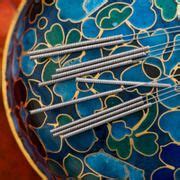Services
While every time I work with a client is a little bit different—because I tailor each session to you and what you need in that moment—there is a general rhythm to how each appointment goes.
While every time I work with a client is a little bit different—because I tailor each session to you and what you need in that moment—there is a general rhythm to how each appointment goes.

Your body and your answers to my questions always lead the treatment process; my work is to select the medicine that meets what is presenting itself as in need of healing. I use experience, training, logic, and my intuition to customize treatment to you on that particular day and over time.
 When you come in, you tell me your concerns. I’ll ask questions and we’ll have a full communication about whatever it is that’s bringing you in.
When you come in, you tell me your concerns. I’ll ask questions and we’ll have a full communication about whatever it is that’s bringing you in.Your body and your answers to my questions always lead the treatment process; my work is to select the medicine that meets what is presenting itself as in need of healing. I use experience, training, logic, and my intuition to customize treatment to you on that particular day and over time.
Acupuncture uses needles to promote equilibrium in your Qi, or energy, based on an understanding of your individual physical, emotional, and spiritual state of being. It is an integral component of Traditional Chinese Medicine, which uses diagnostic techniques for treatment protocols that have developed over several thousand years. In order to diagnosis what each patient needs, an acupuncturist conducts a series of evaluations (tongue, pulse, and physical observation) and asks a thorough set of questions about health and lifestyle to develop an effective treatment plan. While acupuncture is an effective treatment for a wide range of specific conditions, in general, treatment aims to restore balance and promote resilience.
After a formal analysis of your symptoms, pulse, and tongue, I select a combination of herbs and a treatment protocol for using them. The herbal formula can combine culinary herbs, local plants, dried roots, branches, and leaves. Herbs may be taken as a tea, tincture, or tablet; rubbed on as a salve; or sprinkled into a bath.
Cupping: Small glass cups placed on the body (whether they slide or remain stationary) to create suction, which increases circulation and stimulates the flow of Qi.
Gua Sha: I use a porcelain soup spoon to create friction across the muscles on specific parts of the body.
Shoni Shin: Known as pediatric acupuncture, this modality invigorates specific areas of the body by a light tapping with a hammer-shaped tool that has tiny needles on the face of its head.
Craniosacral Therapy is a hands-on technique that uses light touch to feel the cycling of craniosacral fluid through the skull, sacrum, and spine; assess where there are blockages; and restore optimal fluid circulation. When the craniosacral fluid is empowered to flow freely again, all systems in the location regain maximum function. Performing hands-on craniosacral at the end of a session helps drop the client further into the relaxed state, which helps access the Qi even more deeply and helps the body hold the changes for longer.
Meditation has been shown to support the immune system, heart function, and neuroplasticity. It helps slow us down and increase our awareness of our habits so that we can better manage our emotions. I often encourage my patients to meditate during their sessions (sometimes it is guided, sometimes the patient does it on her own during the relaxation time). I also guide them to establish their own practice at home. Meditating at home helps extend the benefits you experience on the table to the rest of your life. It teaches you to be able to sit with whatever thought or feeling comes up and to observe it as it changes without attaching to it.
Somatic Experiencing is typically used to help address deep physical and emotional trauma. It also is a brilliant way to approach nagging issues that are tolerable but never truly resolve on their own. Somatic Experiencing focuses on sensing what is showing up physically in the body, then tracking that sensation and following where it leads, and what feelings or thoughts it brings up. This process is always revealing and frequently surprising, both to the client and to me. It is similar to mediation in that it encourages to you to notice and accept whatever sensation comes up, whether it is pleasant or not, and is a great education in the habits and behaviors you may only be partially aware of doing. Somatic Experiencing also makes a great home practice, and dovetails beautifully with acupuncture, meditation, and craniosacral therapy.
Alexander Technique is a system devised by F. M. Alexander in 1890 that seeks to raise a student’s understanding of her own physical habits so that she can release old patterns and introduce new, more constructive, alignment. The core teaching of the technique is to learn how to release the neck, which helps all other areas let go so that the body can regain its natural alignment and integrity, improving function and reducing pain.
Yin Yoga is a slower, gentler form of yoga that uses poses that target a specific muscular area or joint and held for three to five minutes (significantly longer than a typical yoga pose). After each pose, you assume a resting position, which allows your Qi to rebound and your nervous system to reset and regulate the parasympathetic nervous system (the branch of the nervous system that rules the ‘rest and digest’ functions of the body). Yin yoga doubles as a movement meditation in holding the pose will bring you up against the edge of your tolerance, and you’ll often need to breathe your way through it until the uncomfortable sensations resolve.